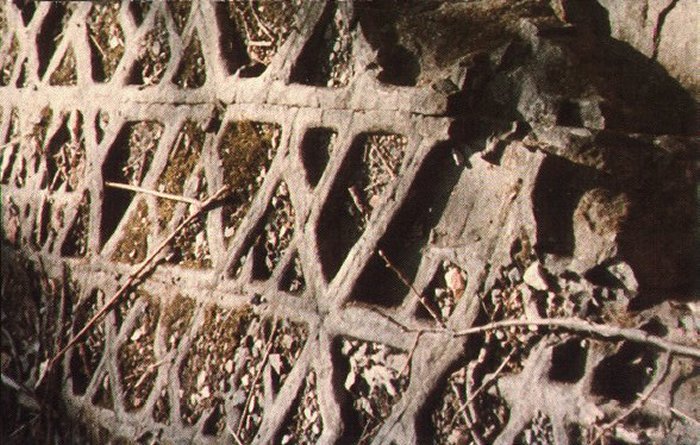America’s Mysterious Waffle Rock Formation
A. Sutherland - AncientPages.com - It is one of America's greatest and yet little known enigmas. There are several reasons why Waffle Rock is considered a mystery.
The geometric patterns are so regular that it is difficult to believe this is a work of nature.
If it not a natural phenomenon, it would mean that it was perhaps created by an ancient civilization with the help of highly sophisticated unknown technology.
The Waffle Rock is located in West Virginia, United States. This rock of debatable origin was discovered by Betty Webster Bishop and her mother during one of their Sunday walks.
According to Ms. Bishop "the rock in question, was at least six feet above the ground, and evidently several feet were embedded in the earth.
It consisted of an uneven waffle type pattern, forming many geometric designs. The raised edges of this design were deep enough for adequate toe-holds for many feet that enjoyed scaling this mini-mountain."
The reason it's called Waffle Rock is simply because it looks like a waffle iron grid.
Over the years, Waffle Rock's origin and creation has been the subject of many theories.
Speculations range from the impressions of the skin pattern of a giant reptile to a result of highly advanced unknown ancient technology.
Upon examination by geologists from the U. S. Corps of Engineers and other agencies, it was concluded that the rock is a natural geologic formation," Col. Martin W. Walsh Jr. Corps of Engineers Commander (Baltimore MD) wrote in his letter to letter to the Saturday Evening Post in December 1984.
Col. Walsh also described the process by which such patterning could form naturally. He suggested that sand deposited by ancient streams consolidated into sandstone layers with rock above and below being compressed into the large folds that make up the pattern.
It's believed that this occurred between 250 and 300 million years ago, during the formation of the Appalachian Mountains.
A part of the original Waffle Rock was moved when Jennings Randolph Lake was created by the building of a Dam. The Waffle Rock boulder has been a tourist attraction since 1985. It is viewable seven days a week now at the West Virginia Overlook. So, if are in the area, go and take a look. It's worth a visit.
A smaller piece of the same rock is also on display in the Smithsonian Institute of Natural History located in Washington, DC.
Can nature produce such regular patterns? The common theory is that the Waffle Rock which is primarily composed of soft sandstone fractured and cracked during the formation of the mountains in Mineral County and these cracks were then naturally filled with quartz.
The quartz eventually hardened and formed in the cracks forming the pattern we see today when the softer sandstone rock was eroded quicker than the much harder quartz rock.
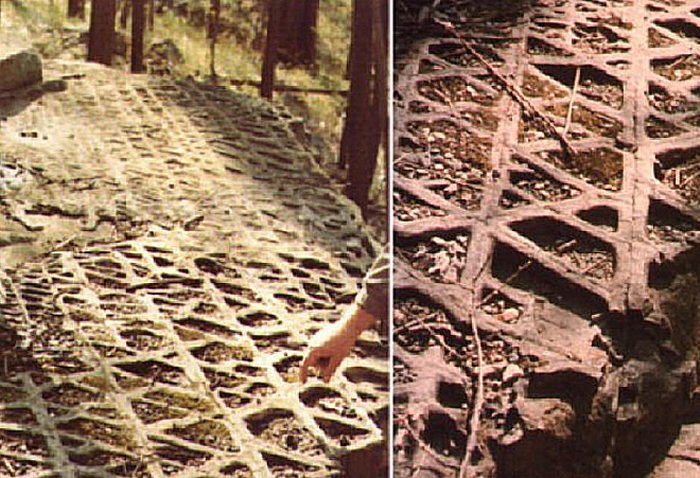
Another possibility that cannot be dismissed is that that Waffle Rock is not of natural origin, but rather a man-made creation. If so, what tools or machinery were used to create such amazingly perfect patterns?
The other theory which is truly intriguing is the idea that electromagnetic fields helped form the geometric patterns of the Waffle Rock. Similar to how snowflakes are formed, the geometric patterns of the Waffle Rock could potentially have been affected by an electrical storm at the moment of its creation.
However, these are just speculations. The truth is that scientists are unable to explain how the Waffle Rock was formed.
It is worth mentioning that similar waffle-shaped rocks have been found in Monongahela, and Pennsylvania, although these examples were much smaller in size.
Another possibility that has been put forward by some is that that Waffle Rock is not of natural origin, but rather a man-made creation. If so, what tools or machinery were used to create such amazingly perfect patterns?
The origin of the Waffle Rock remains a mystery. Depending on who you ask you will get different answers about its creation.
The verdict is still out there and it is up to you to judge for yourself.
Written by – A. Sutherland AncientPages.com Staff Writer
Copyright © AncientPages.com All rights reserved. This material may not be published, broadcast, rewritten or redistributed in whole or part without the express written permission of AncientPages.com
More From Ancient Pages
-
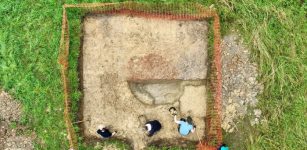 Mystery Of The Roman Tile Kiln At Brandiers Farm Solved!
Archaeology | Aug 18, 2023
Mystery Of The Roman Tile Kiln At Brandiers Farm Solved!
Archaeology | Aug 18, 2023 -
 Forbidden Knowledge: Secret Ancient Gates Of The Shining Ones – The Beginning – Part 1
Ancient Mysteries | Jul 12, 2019
Forbidden Knowledge: Secret Ancient Gates Of The Shining Ones – The Beginning – Part 1
Ancient Mysteries | Jul 12, 2019 -
 Ancient Kuttamuwa Stele And Iron Age Belief That Soul Lived In Funerary Slab
Featured Stories | Sep 10, 2016
Ancient Kuttamuwa Stele And Iron Age Belief That Soul Lived In Funerary Slab
Featured Stories | Sep 10, 2016 -
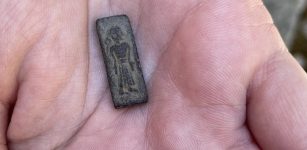 Rare And Tiny Ancient Stamps Found In Falster May Show The Way To An Unknown King’s Home
Archaeology | Jul 26, 2023
Rare And Tiny Ancient Stamps Found In Falster May Show The Way To An Unknown King’s Home
Archaeology | Jul 26, 2023 -
 Were The Knights Templar Guilty Or Innocent Of The Crimes Laid Against Them?
Featured Stories | Dec 24, 2020
Were The Knights Templar Guilty Or Innocent Of The Crimes Laid Against Them?
Featured Stories | Dec 24, 2020 -
 Amazing Archaeological Discovery In A Secret Underground Structure In Transylvania Could Rewrite Ancient History
Featured Stories | Feb 13, 2024
Amazing Archaeological Discovery In A Secret Underground Structure In Transylvania Could Rewrite Ancient History
Featured Stories | Feb 13, 2024 -
 Magnificent Hattusa: Capital Of The Hittite Empire
Civilizations | Apr 11, 2021
Magnificent Hattusa: Capital Of The Hittite Empire
Civilizations | Apr 11, 2021 -
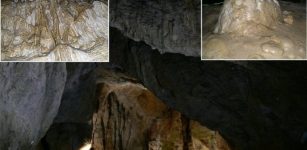 Bacho Kiro Cave: Early Homo Sapiens Groups In Europe Faced Subarctic Climates
Archaeology | Sep 24, 2021
Bacho Kiro Cave: Early Homo Sapiens Groups In Europe Faced Subarctic Climates
Archaeology | Sep 24, 2021 -
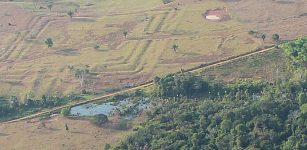 Millennial Pre-Colonial Cultural Influence Is Evident In The Amazon Forest
Archaeology | Jun 28, 2020
Millennial Pre-Colonial Cultural Influence Is Evident In The Amazon Forest
Archaeology | Jun 28, 2020 -
 On This Day In History: Albert Einstein Publishes His General Theory Of Relativity – On Mar 20, 1916
News | Mar 20, 2017
On This Day In History: Albert Einstein Publishes His General Theory Of Relativity – On Mar 20, 1916
News | Mar 20, 2017 -
 Troublesome Momus: Deity Of Irony, Ridicule, Sarcasm And Harmful Jokes In Greek And Roman Mythology
Featured Stories | Mar 14, 2022
Troublesome Momus: Deity Of Irony, Ridicule, Sarcasm And Harmful Jokes In Greek And Roman Mythology
Featured Stories | Mar 14, 2022 -
 Mystery Of The 3,500-Year-Old ‘Screaming Woman’ Mummy Solved
Archaeology | Aug 9, 2024
Mystery Of The 3,500-Year-Old ‘Screaming Woman’ Mummy Solved
Archaeology | Aug 9, 2024 -
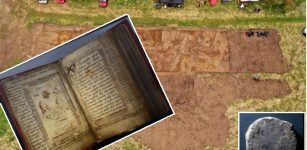 Archaeologists Discover Long-Lost Scottish Monastery Of Deer And Solve An Old Manuscript Mystery
Archaeology | Nov 21, 2023
Archaeologists Discover Long-Lost Scottish Monastery Of Deer And Solve An Old Manuscript Mystery
Archaeology | Nov 21, 2023 -
 Rakshasas: Night Wandering Race Of Demons And Warriors Fuelled By Kundalini In Hindu Beliefs
Featured Stories | Oct 8, 2019
Rakshasas: Night Wandering Race Of Demons And Warriors Fuelled By Kundalini In Hindu Beliefs
Featured Stories | Oct 8, 2019 -
 Babylonian Story Of Bird-God Anzu ‘The Wise One’ And His Underworld Realm
Featured Stories | Dec 10, 2016
Babylonian Story Of Bird-God Anzu ‘The Wise One’ And His Underworld Realm
Featured Stories | Dec 10, 2016 -
 Native Americans’ Visions Of Distant Explorers May Unravel Some Ancient Mysteries Of North America – Archaeological Evidence – Part 2
Ancient Mysteries | Nov 21, 2019
Native Americans’ Visions Of Distant Explorers May Unravel Some Ancient Mysteries Of North America – Archaeological Evidence – Part 2
Ancient Mysteries | Nov 21, 2019 -
 Ancient History Of The Samurai Armor
Featured Stories | Aug 27, 2018
Ancient History Of The Samurai Armor
Featured Stories | Aug 27, 2018 -
 Ancient Burials Shed New Light On Earliest Humans In Indonesia
Archaeology | Aug 25, 2022
Ancient Burials Shed New Light On Earliest Humans In Indonesia
Archaeology | Aug 25, 2022 -
 Chennakeshava Temple In Belur Is Richly Decorated With Scenes From Ramayana Mahabharata And Puranas
Featured Stories | Nov 18, 2021
Chennakeshava Temple In Belur Is Richly Decorated With Scenes From Ramayana Mahabharata And Puranas
Featured Stories | Nov 18, 2021 -
 Map May Confirm The Legend Of The Mysterious Lost Sunken Welsh Kingdom Of Cantre’r Gwaelod In The Black Book Of Carmarthen
Archaeology | Aug 21, 2022
Map May Confirm The Legend Of The Mysterious Lost Sunken Welsh Kingdom Of Cantre’r Gwaelod In The Black Book Of Carmarthen
Archaeology | Aug 21, 2022



